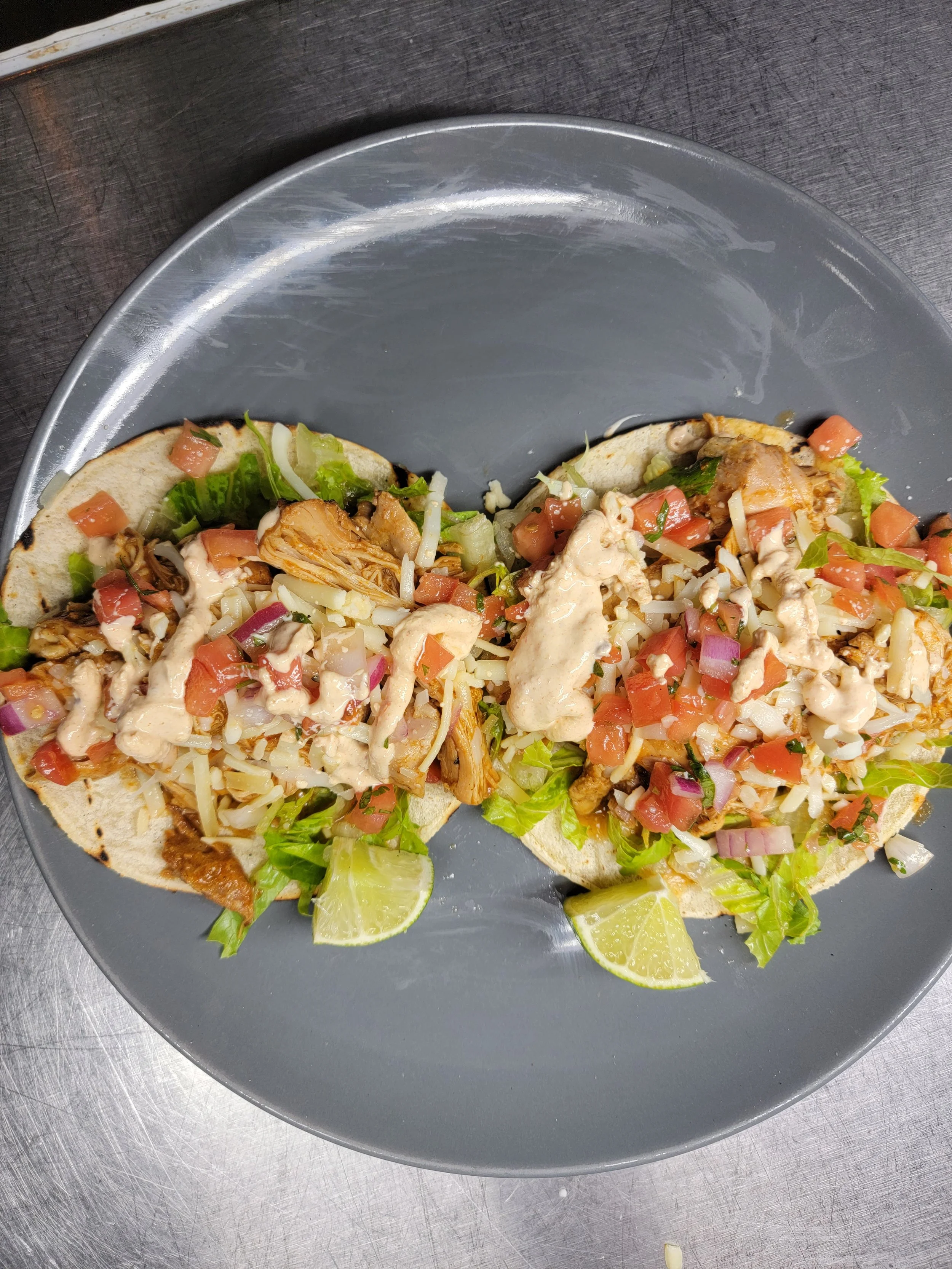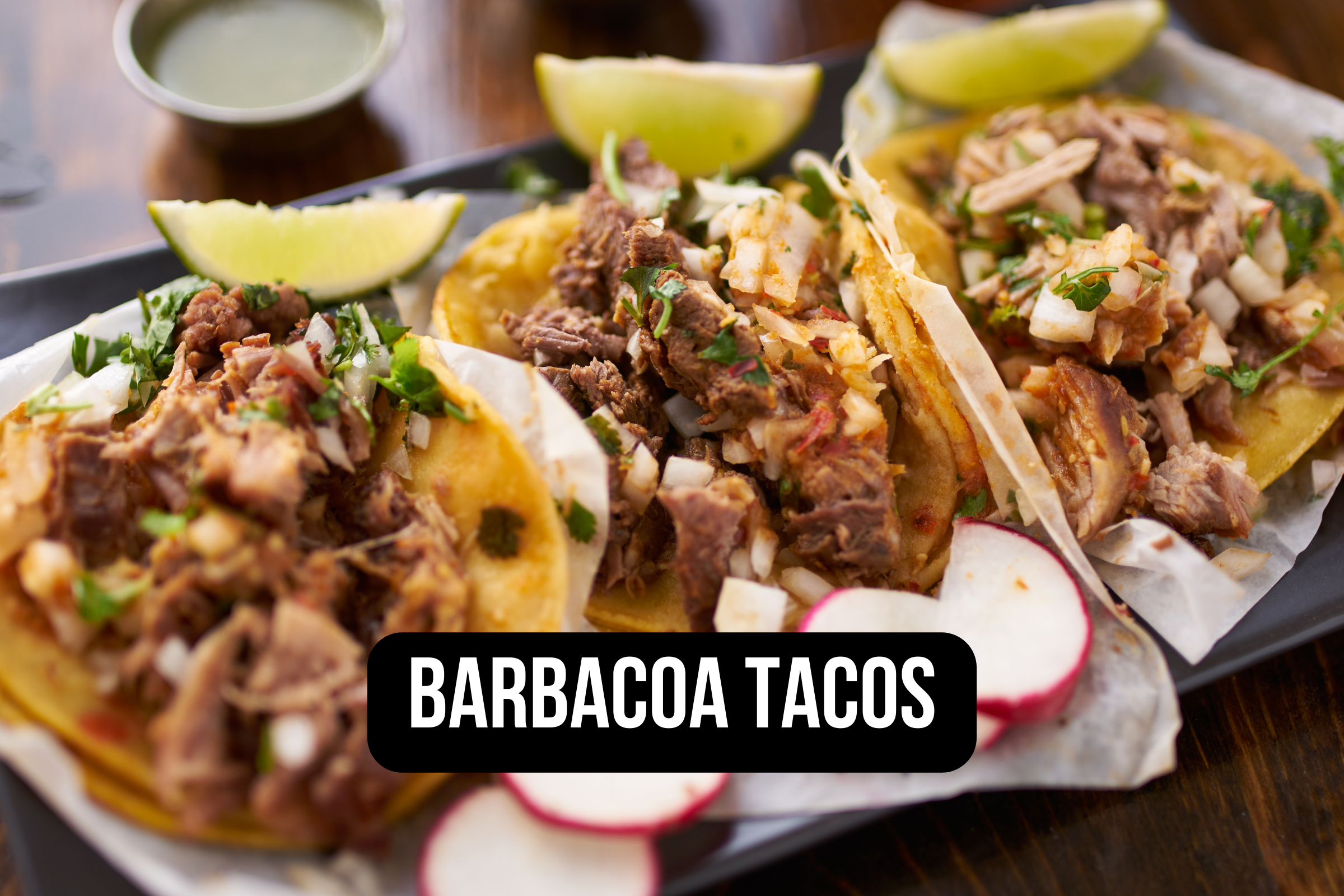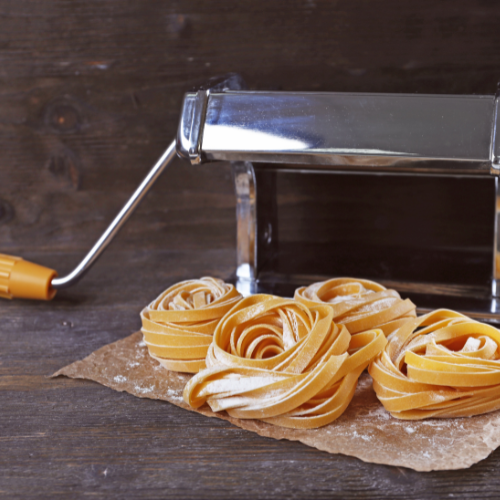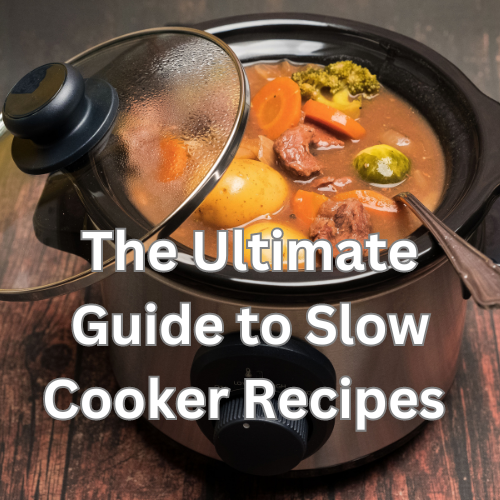An Insight into the Aromatic World of Barbacoa
Table of Contents
History and Origin of Barbacoa: An Ancient Culinary Tradition
The Cultural Significance of Barbacoa: A Catalyst for Community Gatherings
Traditional Method vs Modern Adaptations: Balancing Heritage and Innovation
Step-by-Step Process of Making Barbacoa: Patience is a Virtue
Regional Variations of Barbacoa
Mexican Barbacoa – Central and Northern Mexico: A Culinary Heritage
Texas-Style Barbacoa – Southern United States: A Unique Fusion Flair
The Multifaceted Marvel: Versatility of Barbacoa in the Culinary World
Barbacoa: A Symphony on Its Own
Tacos de Barbacoa: Street Food Extraordinaire
Mingling with Barbacoa: Incorporation into Other Dishes
Health Aspects Related to Consuming Barbacoa
The Nutritional Bounty of Barbacoa
Possible Health Risks: A Balanced Perspective
Food Safety Considerations: Ensuring Healthy Enjoyment
Introduction:
Immersing in the culinary realm often leads one to discover a plethora of dishes, each having its own distinct character and flavor. One such jewel is barbacoa.
A traditional Mexican dish, barbacoa traces its roots back to ancient times and has since then evolved into a delicacy enjoyed globally. To understand what is barbacoa, one must delve deep into its preparation.
This dish typically involves slow-cooking meat over an open fire or in a pit covered with leaves; this process lends the meat an exquisite smoky flavor, which coupled with various spices make up the delicious barbacoa. But beyond just being another tasty recipe in your cookbook, it's important to recognize that barbacoa holds a significant place across various cultures and special occasions and has become synonymous with communal gatherings and festivities.
Definition of Barbacoa: More than just a Dish
On exploring what is barbacoa, one finds that it transcends beyond just being a dish - it's essentially an age-old cooking method that originally entailed heating meats slowly in pits dug out from the earth. The word 'barbacoa' itself has Taino origins - an indigenous Caribbean tribe where it referred to the wooden structure used for cooking meat over indirect heat.
The modern interpretation however has seen variations in the style of cooking wherein apart from open fire or pit; ovens or stovetops are also employed to produce succulent barbecued meats simmered in their own juices along with flavorful herbs and spices like cumin, oregano, bay leaves, cloves, cinnamon etc.; elevating this humble dish to gourmet levels. Yet despite changes over time what remains constant is that every mouthful of well-prepared Barbacoa takes you on gastronomical journey to savor the blend of intense flavors and tender meat.
History and Origin of Barbacoa: An Ancient Culinary Tradition
The history of barbacoa is intertwined with that of Mexican civilization itself. The origins can be traced back to indigenous tribes in the Caribbean – primarily the Taino tribe, who are believed to have used this method of cooking for centuries before Europeans arrived.
Barbacoa was not only a method used for preparing food, but a way to bring communities together. Whole animals would be cooked in leaf-lined pits overnight, providing enough sustenance for entire communities.
This community-centric tradition continued into contemporary times; even today, making barbacoa is considered an event. In time, as settlers arrived in America bringing with them new livestock such as beef, sheep and goats; these meats too found their place in barbacoa preparation which further added variety and depth to this age-old tradition
The Cultural Significance of Barbacoa: A Catalyst for Community Gatherings
Beyond its rich flavor profile lies another intrinsic aspect - its cultural significance. Even asking 'what is barbacoa' would lead one into understanding how deep-rooted this humble dish is within Mexican traditions. It's not just about slow-cooking meat until it’s tender enough to easily pull apart; it's about bringing people together through food.
Often made on special occasions or weekends when families can indulge leisurely over lunch; the preparation often becomes a communal event with everyone partaking in some way or other. Moreover, Barbacoa carries forward traditional values and connects generations in a meaningful way - while older generations pass down family recipes that have been guarded over years if not decades, younger members learn an important part of their cultural heritage adding more value than just taste alone.
The Art of Making Barbacoa: A Gastronomic Ballet
In order to fully comprehend what is barbacoa, it's necessary to delve into the authentic and intricate art of its preparation. The craftsmanship required in making barbacoa involves far more than merely cooking; it is a form of culinary expression that draws upon time-honored traditions and carries cultural significance.
Traditional Method vs Modern Adaptations: Balancing Heritage and Innovation
Barbacoa has seen several transformations from its roots, adapting to modern culinary practices while still preserving its traditional essence. The initial technique involved pit barbecuing, an ancient practice that required immense skill and patience.
The pit barbecuing method of preparing barbacoa entails digging a hole several feet deep, filling it with hot coals or stones, then placing the meat (traditionally whole lambs or goats) wrapped in maguey leaves over these coals. This slow-cooking process renders the meat tender with robust flavors over a period of several hours, often overnight.
One could argue this method imbues an earthy element to the dish that can't be replicated by other means. However, modern adaptations have surfaced due to convenience and accessibility.
Oven roasting became popular as households had access to more sophisticated kitchen equipment. This method involves slow roasting at low temperatures for a prolonged period until the meat reaches desired tenderness.
In recent years, slow cookers and pressure cookers have become household norms for preparing barbacoa. These appliances provide consistent heat and retain moisture effectively resulting in succulent results without constant supervision.
Key Ingredients Used in Barbacoa: More Than Just Meat
What is at the heart of Barbacoa? Well certainly, choices of meat play an integral role in shaping its character.
Traditionally lamb or goat was used but beef cheeks have gained popularity for their rich flavor and succulent texture. Beyond the choice of meat, a host of spices and seasonings contribute to its distinct flavor profile.
Adobo sauce, a tantalizing blend of ground chilies, spices and vinegar, is generously slathered on the meat before cooking. Chipotle peppers in adobo sauce are often used to impart a smoky spiciness that elevates the taste.
Step-by-Step Process of Making Barbacoa: Patience is a Virtue
Creating barbacoa is not a rushed process but rather one that demands patience and attention to detail. After selecting the preferred meat, it's marinated in adobo sauce with chipotle peppers overnight for maximum flavor penetration. The marinated meat is then slow cooked using one's chosen method until tender.
This can take anywhere from four hours in a pressure cooker to twelve hours or more when pit roasting. The result is tender, flavorful meat that falls apart at the touch of a fork.
Once cooked to perfection, the barbacoa is typically shredded and served traditionally with tortillas or used as an ingredient in other dishes. It's also customary to have chopped coriander, onions and lime wedges as accompaniments.
Indeed what is barbacoa? It's not just food but an art form embodying cultural heritage while adapting modern culinary practices with each generation.
Regional Variations of Barbacoa
Mexican Barbacoa – Central and Northern Mexico: A Culinary Heritage
In the heart of Mexico, what is barbacoa often refers to a dish steeped in cultural heritage and tradition. The choice of meat for this delicacy varies, but most commonly, it's either lamb or goat. The animals are often locally raised, with an emphasis on their diet and care to ensure the highest quality of meat.
The cooking process adopted is a painstakingly slow one. It involves wrapping the seasoned meat in maguey leaves and slow-cooking it in a pit oven overnight; this technique ensures that the meat is tender and infused with smoky flavors.
The fat drippings are collected to make a nutrient-rich broth known as consomé, which is often served alongside the barbacoa. Central and Northern Mexican barbacoa uses unique ingredients that give it an unparalleled depth of flavor.
Some traditional recipes call for adobo sauce made from dried chillies such as guajillo or ancho along with spices like cumin, cloves, oregano and bay leaves. These lend the dish its characteristic spicy tanginess which is beautifully offset by fresh garnishes such as cilantro, onions and a splash of lime.
Texas-Style Barbacoa – Southern United States: A Unique Fusion Flair
Barbacoa found its way into Texas cuisine through centuries-old trade routes that connected Mexico with the American South. Over time, Texans have adapted this culinary treasure into something distinctly their own - Texas-style barbacoa. The most significant difference between Mexican barbacoa and its Texan counterpart lies in the choice of meat - Texans usually opt for beef cheeks instead of lamb or goat.
This lends a more robust flavour to their version; furthermore, some recipes call for smoking the meat before slow-cooking it, adding another layer of complexity to the taste. Texans have embraced barbacoa not just as a food but as a social event.
The hours-long cooking process often brings families and neighbors together, making barbacoa cookouts a cherished community tradition. Be it the bustling food truck scene serving up late-night barbacoa tacos or family-run restaurants offering Sunday-morning breakfast featuring this succulent meat, barbacoa has made its mark on Texan cuisine in ways that continue to evolve.
The Multifaceted Marvel: Versatility of Barbacoa in the Culinary World
Barbacoa, with its deep-rooted history and rich flavors, has displayed remarkable versatility in the global culinary panorama. It has been embraced and adapted into a myriad of dishes beyond its traditional form, proving that barbacoa is not just a method of cooking, but a key ingredient that lends itself to various culinary creations.
Barbacoa: A Symphony on Its Own
As a standalone dish, Barbacoa is unequivocally divine. The slow-cooked meat, rendered tender and juicy through hours of patient simmering, becomes the star of the show. The intoxicating aroma from the blend of spices permeates every strand of meat and creates an explosion of flavors with each bite.
When presented as is on a warming plate or pot alongside tortillas or rice with lime wedges and chopped cilantro on the side for garnish, it celebrates what is barbacoa in its purest form. Each serving offers an intimate look at the meticulous process and passion that goes into making this gastronomic wonder.
Tacos de Barbacoa: Street Food Extraordinaire
If there's one iconic dish that exemplifies how barbacoa has been deftly incorporated into another beloved food staple - it would be Tacos de Barbacoa. This street food extraordinaire showcases soft corn tortillas generously filled with succulent barbacoa meat which are then garnished with fresh coriander leaves and finely diced onions.
The secret to their irresistible charm lies in their simplicity -- allowing the mouthwatering flavor profile of barbacoa to take center stage while being delightfully complemented by every chosen accompaniment. Eaten hot right off street-side stands or bustling taquerias, these tacos offer a sublime gastronomic experience that pays homage to the authentic taste of barbacoa.
Mingling with Barbacoa: Incorporation into Other Dishes
Beyond standalone servings and its iconic role in tacos, barbacoa has seamlessly permeated through a plethora of other dishes. It can be found nestling within the folds of burritos or quesadillas, enhancing them with its smoky and mildly spicy complexity. Barbacoa is also commonly used as a topping on tostadas or nachos - where the savory pull-apart meat serves as a delightful counterpoint to the crunchy base.
In soups and salads too, barbacoa finds an abode - adding depth and richness that turn ordinary dishes into extraordinary meals. Whether it's used as main course or side dish, barbacoa's versatility demonstrates how this traditional method transforms into an integral part of global culinary artistry.
Health Aspects Related to Consuming Barbacoa
The Nutritional Bounty of Barbacoa
Barbacoa, as a meat-based dish, is inherently high in protein. This makes it an excellent source of this vital macronutrient, which is essential for building and repairing tissues, among other functions in the body. Furthermore, depending on the type of meat used, barbacoa can also be a source of iron (necessary for hemoglobin production), zinc (for immune function and DNA synthesis), and B-vitamins (for energy production and brain health).
The spices used in barbacoa are not just flavor-enhancers; they come with a myriad of health benefits too. For instance, chili peppers contain capsaicin that has anti-inflammatory properties and antioxidants like vitamin C. Garlic has been noted to improve heart health and boost immunity.
It's important to note that like any other food item, the healthfulness of barbacoa depends on its preparation method. Traditionally prepared barbacoa with limited use of oil or unhealthy fats can indeed be a healthy addition to your diet.
Possible Health Risks: A Balanced Perspective
While we’ve established that barbacoa can tout numerous nutritional benefits if prepared mindfully, it's also essential to consider potential dietary concerns related to high meat consumption. Diets rich in red meats have been associated with increased risk factors for certain types of diseases such as cardiovascular disease or certain cancers. Moreover, since traditional barbacoa involves slow-cooking meat over long periods under lower temperature controls than some conventional cooking methods might afford it may increase the potential risk for foodborne illnesses if not handled correctly.
Food Safety Considerations: Ensuring Healthy Enjoyment
When preparing or consuming barbacoa at home or at restaurants, it is crucial to ensure strict food safety measures are adhered to. This includes sourcing the meat from reliable and hygienic sources, ensuring the meat is thoroughly cooked, and leftovers are stored properly to prevent any potential bacterial growth.
Barbacoa Recipe
Serving Size: 6-8 servings
Nutritional Information:
Calories: 350 per serving
Total Fat: 15g
Saturated Fat: 6g
Cholesterol: 120mg
Sodium: 650mg
Total Carbohydrates: 5g
Dietary Fiber: 1g
Protein: 45g
Ingredients:
3 lbs beef cheeks or lamb shoulder, trimmed of excess fat
4 dried guajillo chilies, stemmed and seeded
2 dried ancho chilies, stemmed and seeded
1 medium onion, chopped
4 cloves garlic, minced
2 teaspoons ground cumin
1 teaspoon dried oregano
1 teaspoon ground cloves
1 teaspoon ground cinnamon
2 bay leaves
2 tablespoons apple cider vinegar
Salt and pepper to taste
Corn tortillas, chopped onions, fresh cilantro, lime wedges for serving
Instructions:
Preheat your oven to 325°F (165°C).
In a dry skillet over medium heat, toast the dried guajillo and ancho chilies for about 30 seconds on each side until fragrant. Remove from heat and transfer to a bowl.
Pour hot water over the toasted chilies and let them soak for about 15-20 minutes until softened.
In a blender or food processor, combine the soaked chilies, chopped onion, minced garlic, ground cumin, dried oregano, ground cloves, ground cinnamon, bay leaves, and apple cider vinegar. Blend until smooth, adding water if needed to reach a thick, smooth consistency.
Season the beef cheeks or lamb shoulder with salt and pepper, then place them in a large Dutch oven or roasting pan.
Pour the chili sauce over the meat, making sure it's evenly coated.
Cover the Dutch oven or roasting pan with a lid or aluminum foil and transfer to the preheated oven.
Cook for 4-5 hours, or until the meat is tender and falls apart easily with a fork.
Once cooked, remove the meat from the oven and let it rest for about 10 minutes before shredding it with two forks.
Serve the shredded barbacoa meat with warm corn tortillas and garnish with chopped onions, fresh cilantro, and lime wedges.
Enjoy your delicious homemade barbacoa!
Chef's Tip:
For an extra layer of flavor, you can sear the meat in a hot skillet before transferring it to the Dutch oven or roasting pan. This will help lock in the juices and enhance the overall taste of the barbacoa.
Conclusion
Our gastronomic journey into understanding what is barbacoa has revealed not just its cultural richness but also its nutritional composition. Like all foods, consuming barbacoa also requires a balanced approach. Enjoying it in moderation while ensuring proper food safety measures can allow us to savour this traditional dish without compromising our health.
While there may be concerns around high meat consumption, barbacoa can fit into a healthy eating pattern when paired with plenty of vegetables and whole grains. After all, food heritage is best enjoyed when it compliments our health and wellbeing.



























































Patio Grill Station